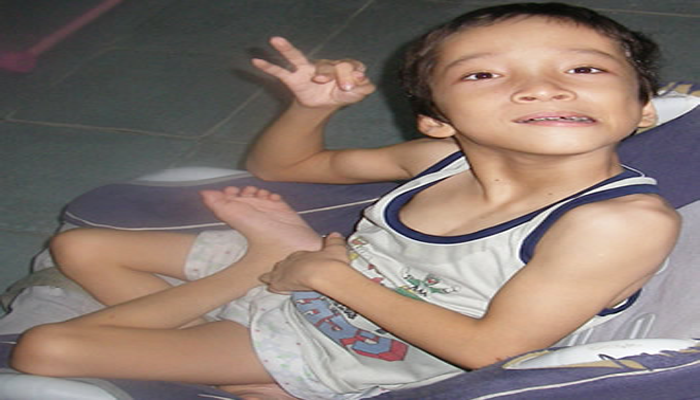Cerebral Palsy is a dynamic disorder of posture and mobility being motor manifestation of non-progressive brain damage sustained during period of brain growth in fetal life, infancy and childhood with associated handicap that may include vision and auditory deficits, seizures, MR, LD, feeding, speech and behavioral problems.

Cerebral Palsy is an umbrella like term which describes a group of chronic disorders impairing control of movement that appears in first few yrs of life and generally do not worsen over time.These disorders r caused by faulty development or damage to motor areas of brain that disrupts the brain’s ability to control movt and posture.
Cerebral palsy (CP) is a broad diagnostic term used to describe a problem with movement and posture that makes certain activities difficult. Although someone who has cerebral palsy has problems moving his or her muscles, this is not because there is something wrong with the muscles or nerves. These difficulties are caused because of problems in the brain. Cerebral palsy can be the result of an injury to the brain during gestation or in the first year of life, or it occur when the brain does not develop properly during gestation. The injured or abnormal brain is unable to optimally control movement and posture.
Simply stated, “cerebral” refers to the brain, and “palsy” refers to muscle weakness and poor control. Although the brain itself will not get worse, people who have cerebral palsy will usually change over time. Sometimes they will get better, and some patients will stay the same. Occasionally they will get worse, usually because of changing muscle tone or development of joint contractual.
Classification of CP
- Mild – Mild cerebral palsy means a child can move without assistance; his or her daily activities are not limited.
- Moderate – Moderate cerebral palsy means a child will need braces, medications, and adaptive technology to accomplish daily activities.
- Severe – Severe cerebral palsy means a child will require a wheelchair and will have significant challenges in accomplishing daily activities.
- No CP – No CP means the child has cerebral palsy signs, but the impairment was acquired after completion of brain development and is therefore classified under the incident that caused the cerebral palsy, such as traumatic brain injury or encephalopathy.
[Topographical classification describes body parts affected]
- Monoplegia/monoparesis means only one limb is affected. It is believed this may be a form of hemiplegia/hemiparesis where one limb is significantly impaired.
- Diplegia/diparesis usually indicates the legs are affected more than the arms; primarily affects the lower body.
- Hemiplegia/hemiparesis indicates the arm and leg on one side of the body is affected.
- Paraplegia/paraparesis means the lower half of the body, including both legs, are affected.
- Triplegia/triparesis indicates three limbs are affected. This could be both arms and a leg, or both legs and an arm. Or, it could refer to one upper and one lower extremity and the face.
- Double hemiplegia/double hemiparesis indicates all four limbs are involved, but one side of the body is more affected than the other.
- Tetraplegia/tetraparesis indicates that all four limbs are involved, but three limbs are more affected than the fourth.
- Quadriplegia/quadriparesis means that all four limbs are involved.
- Pentaplegia/pentaparesis means all four limbs are involved, with neck and head paralysis often
The brain injury that causes cerebral palsy affects motor function, the ability to control the body in a desired matter. Two main groupings include spastic and non-spastic. Each has multiple variations and it is possible to have a mixture of both types.
- Spastic cerebral palsy is characterized by increased muscle tone. Spastic cerebral palsy is hypertonic and accounts for 70% to 80% of cerebral palsy cases. Muscles continually contract, making limbs stiff, rigid, and resistant to flexing or relaxing. Reflexes can be exaggerated, while movements tend to be jerky and awkward. Often, the arms and legs are affected. The tongue, mouth, and pharynx can be affected, as well, impairing speech, eating, breathing, and swallowing. ccurs in the pyramidal tract and is referred to as upper motor neuron damage.
- Non-spastic cerebral palsy is caused by an injury in the brain outside the pyramidal tract will exhibit decreased or fluctuating muscle tone. Non-spastic cerebral palsy is decreased and/or fluctuating muscle tone.Movement can be slow or fast, often repetitive, and sometimes rhythmic. Planned movements can exaggerate the effect – a condition known as intention tremors. Stress can also worsen the involuntary movements, whereas sleeping often eliminates them.


 +91-94 24 851 514
+91-94 24 851 514






